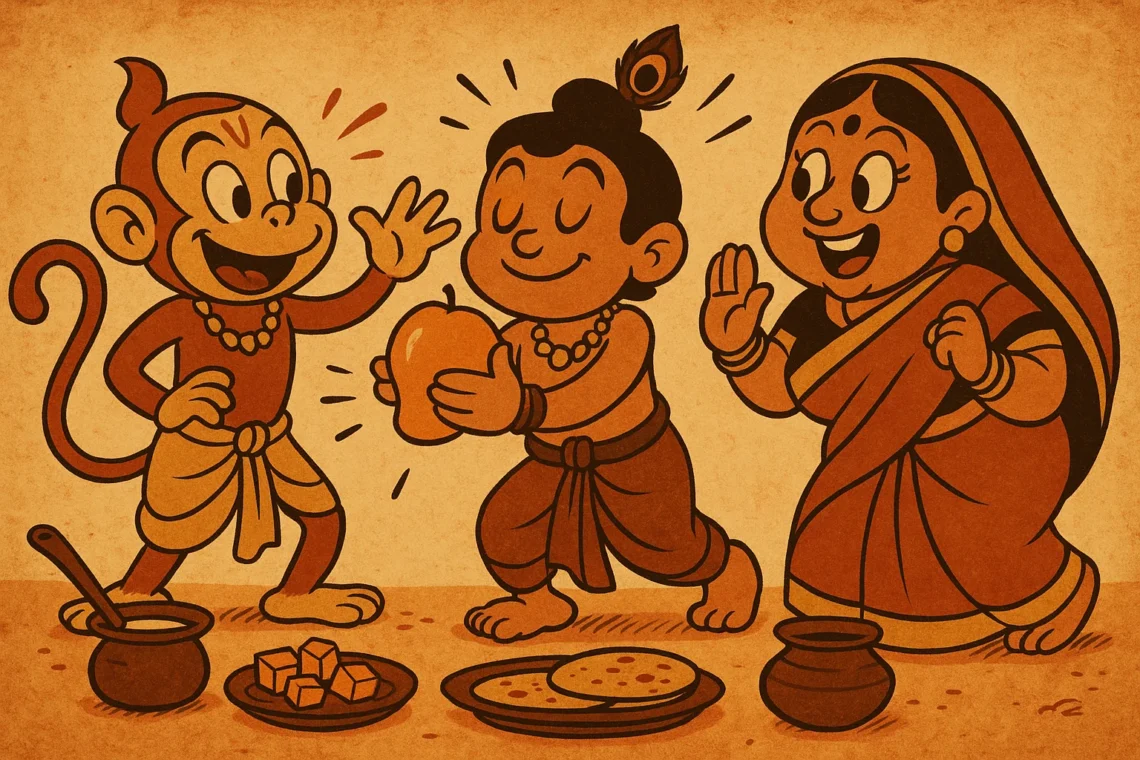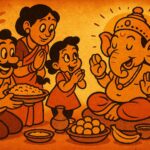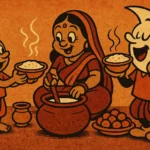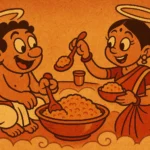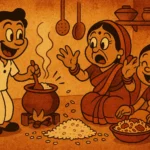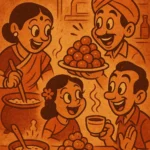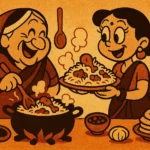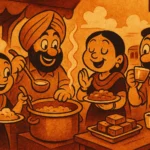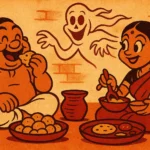It was a fruit, just a mango. But in the old stories, nothing is ever just anything. This mango was golden. Luminous. Fragrant beyond belief. Some say it came from the celestial gardens of Indra. Others claim it was a gift from Sage Narada—a known chaos agent in mythological circles—who loved tossing divine grenades just to watch what happened next. The mango was special. And, crucially, it was labeled: “To the wisest.” That’s all it took for the gods to lose their collective cool.
The contenders? Ganesha and Kartikeya. Brothers, yes. But also symbols of two different paths: Ganesha, round-bellied and calm, loved for his wisdom and appetite; Kartikeya, warrior prince, six-faced and swift, embodiment of speed and valor. The mango sat between them like a lit diya in a room full of curtains. And someone had to decide—who gets the fruit?
The Contest That Wasn’t About Fruit
They asked their parents—Shiva and Parvati—for a verdict. “Settle it for us,” they said. Their parents, ever the spiritual tricksters, offered a task. “Whoever can go around the world three times the fastest will win the mango.” Kartikeya took off on his divine peacock in a flash. Ganesha? He walked a slow circle around his parents. “You are my world,” he said. Done.
That’s it. Ganesha wins. Kartikeya returns, dust-covered and furious. And the mango? Quietly handed over. One bite, and the fruit is gone. The lesson, though, hangs in the air forever. Wisdom isn’t speed. Devotion isn’t competition. And sometimes, the best way to win a mango is to know when not to chase it.
So Why a Mango?
Because mangoes are irresistible. Sensual. Symbolic. They ripen slowly, hide behind hard skin, and once opened, demand to be eaten with your hands. You can’t eat a mango without surrendering to it—juice on your chin, strings in your teeth, sweetness that borders on indecency. If fruit were drama, mango would be Shakespeare. No wonder it got a starring role in a divine family squabble.
And in India, mangoes aren’t just seasonal—they’re sacred. They show up in rituals, paintings, temple carvings. Mango leaves adorn doorways at weddings. Mango motifs dance across saris and bedsheets. We’ve turned them into pulp, pickle, poetry. So of course the gods would fight over one. They had taste.
The Fruit as Metaphor
The mango in the story isn’t just about who eats it—it’s about how we see value. Is it in conquest or context? Is it about being first or understanding what truly matters? Kartikeya flew across the world and saw everything. Ganesha walked in a circle and saw everything that mattered. It’s a story told to children, yes, but also a reminder for adults who keep running in bigger and bigger circles hoping for sweeter fruit.
Mangoes Today, Still Divine
Now, every summer when mangoes arrive in the market—stacked in pyramids, wrapped in straw, smelling like the inside of a temple—I think of that story. I think of how something so soft could create such a rift. I think of how easily love, ego, and hunger blur. And I try, in small ways, to earn my mango like Ganesha did—not by flying around, but by sitting still and noticing what’s already around me.
Because in the end, the gods didn’t fight over a mango. They fought over what it meant to deserve one. And that’s a flavor we’re all still trying to taste.
Born in Mumbai, now stir-frying feelings in Texas. Writes about food, memory, and the messy magic in between — mostly to stay hungry, sometimes just to stay sane.

